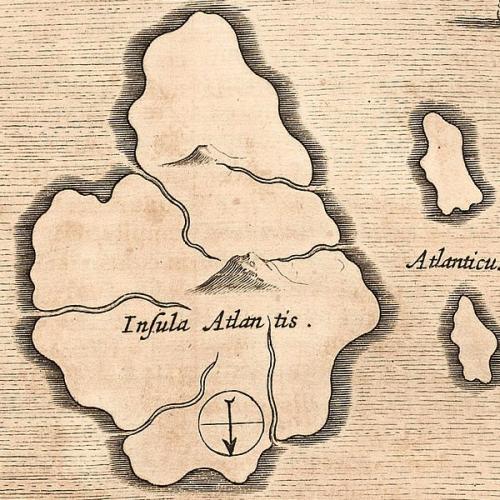Copy Link
Add to Bookmark
Report
dictyNews Volume 40 Number 26

dictyNews
Electronic Edition
Volume 40, number 26
October 24, 2014
Please submit abstracts of your papers as soon as they have been
accepted for publication by sending them to dicty@northwestern.edu
or by using the form at
http://dictybase.org/db/cgi-bin/dictyBase/abstract_submit.
Back issues of dictyNews, the Dicty Reference database and other
useful information is available at dictyBase - http://dictybase.org.
Follow dictyBase on twitter:
http://twitter.com/dictybase
=========
Abstracts
=========
The thyroxine inactivating gene, type III deiodinase, suppresses
multiple signaling centers in Dictyostelium discoideum
Shashi Prakash Singh1, Ranjani Dhakshinamoorthy1, Pundrik Jaiswal1#,
Stefanie Schmidt2, Sascha Thewes2, and Ramamurthy Baskar1*
Affiliations: 1Department of Biotechnology, Bhupat and Jyoti Mehta
School of Biosciences, Indian Institute of Technology-Madras,
Chennai-600036, India. 2Institute for Biology-Microbiology,
Department of Biology, Chemistry, Pharmacy, Freie Universitt Berlin,
14195 Berlin, Germany.
# Present address: National Institutes of Diabetes and Digestive
and Kidney Diseases (NIDDK)-National Institutes of Health (NIH),
Bethesda, Maryland 20892, USA.
Journal: Developmental Biology, in press
Abstract
Thyroxine deiodinases, the enzymes that regulate thyroxine metabolism,
are essential for vertebrate growth and development. In the model
organism Dictyostelium discoideum, a single intronless gene (dio3)
encodes type III thyroxine 5' deiodinase. The amino acid sequence of
D. discoideum Dio3 shares 37% identity with human T4 deiodinase and
is a member of the thioredoxin reductase superfamily. dio3 is expressed
throughout growth and development and by generating a knockout of dio3,
we have examined the role of thyroxine 5' deiodinase in D. discoideum.
dio3- had multiple defects that affected growth, timing of development,
aggregate size, cell streaming, and cell-type differentiation. A
prominent phenotype of dio3- was the breaking of late aggregates
into small signaling centers, each forming a fruiting body of its own.
cAMP levels, its relay, photo- and chemotaxis were also defective in
dio3-. Quantitative RT-PCR analyses suggested that expression levels of
genes encoding adenylyl cyclase A (acaA), cAMP-receptor A (carA) and
cAMP-phosphodiesterases were reduced. There was a significant reduction
in the expression of CadA and CsaA, which are involved in cell-cell
adhesion. The dio3- slugs were likely to have a prestalk identity, with
the expression of the prestalk marker ecmA being more pronounced than
that of the prespore marker pspA. Thus, Dio3 seems to have roles in
mediating cAMP synthesis/relay, cell adhesion and slug patterning. The
phenotype of dio3- suggests that Dio3 may prevent the formation of
multiple signaling centers during D. discoideum development. This is
the first report of a thyroxine metabolism gene that is involved in
growth and development in a lower eukaryote.
Submitted by Shashi Prakash Singh [shashi_prakash5@yahoo.com]
----------------------------------------------------------------------
Rectified directional sensing in long-range cell migration
Akihiko Nakajima, Shuji Ishihara, Daisuke Imoto and Satoshi Sawai
Department of Basic Science, Graduate School of Arts and Sciences,
University of Tokyo, Tokyo 153-8902, Japan.
Nature Communications, in press
How spatial and temporal information are integrated to determine the
direction of cell migration remains poorly understood. Here, by
precise microfluidics emulation of dynamic chemoattractant waves,
we demonstrate that, in Dictyostelium, directional movement as well
as activation of small guanosine triphosphatase Ras at the leading
edge is suppressed when the chemoattractant concentration is
decreasing over time. This ÔrectificationÕ of directional sensing
occurs only at an intermediate range of wave speed and does not
require phosphoinositide-3-kinase or F-actin. From modelling analysis,
we show that rectification arises naturally in a single-layered
incoherent feedforward circuit with zero-order ultrasensitivity.
The required stimulus time-window predicts ~5 s transient for
directional sensing response close to Ras activation and inhibitor
diffusion typical for protein in the cytosol. We suggest that the
ability of Dictyostelium cells to move only in the wavefront is
closely associated with rectification of adaptive response combined
with local activation and global inhibition.
Submitted by Satoshi Sawai [cssawai@mail.ecc.u-tokyo.ac.jp] ==============================================================
[End dictyNews, volume 40, number 26]






















